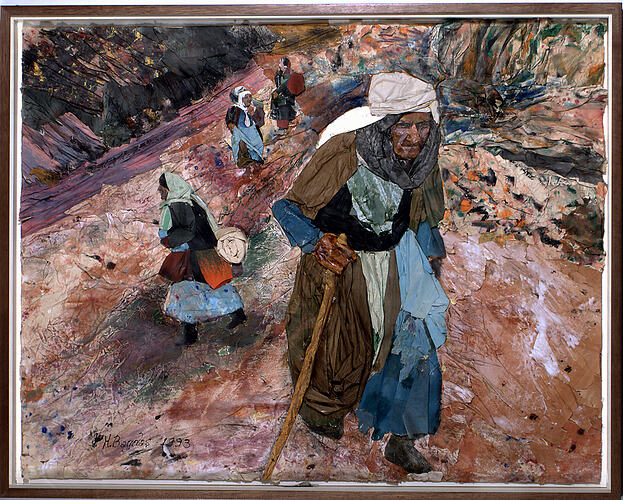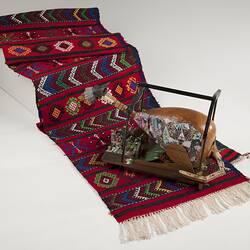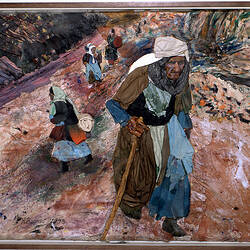Summary
Hasan Bagdas, a Kurdish refugee from Turkey, arrived in Australia in 1973. He became an art practitioner and active member of the local Kurdish community.
Hasan Bagdas was born in 1949 in a Kurdish village, on the border between Türkiye (formerly Turkey) and, what Kurds call Kurdistan. He was six years old when his father and brother died in a car accident. A year later he had to attend the local Turkish school, as was the policy for all children from the age of seven. There Hasan recalled a process of indoctrination for Kurdish children to define themselves as Turkish. After finishing primary school Hasan went to the city to study art and worked in an art and decoration studio. He remembers being asked which village he came from which revealed his Kurdish heritage.
During the 1960s Hasan describes a political shift in which gradually resulted in a greater recognition by Kurds of their own Kurdish cultural heritage. However, this was often violently received by extreme right-wing political activists and Hasan remembers being physically attacked. As was the law in Türkiye, he was conscripted for compulsory military training but his real troubles began when he was associated through a overseas friend's correspondence with anti-Turkish beliefs. Around 1972, Hasan was removed from his town and signwriting business where he was settled and accepted by his community, taken to Ankara with some other men and tortured for 50 days. He was about 21/22 years old by this time and married to his cousin Zarife. When he was finally set free, Hasan was ostracised as a person dangerous to associate with.
It was after this difficult time that Hasan was contacted by his uncle who had migrated to Australia in 1968, and who offered to sponsor him to come to Australia. Hasan believed he would never be safe in Türkiye and was keen to leave. His first application was rejected, but through the assistance of Embassy contacts he was approved and left for Australia with his wife Zarife on 27 May 1973. They arrived at Tullamarine Airport on 29 May 1973 and stayed with his uncle. Their daughter was born in Melbourne in 1975.
Their first jobs, arranged by Hasan's uncle, were in textile factories in Brunswick, which he described as dirty work and very long hours. Hasan then worked on the underground railway system for seven years which he describes as a good job. Hasan was also involved in the establishment of the Australian Kurdish Workers Union of which he was president. This high profile work, which also involved criticising the Turkish Government, resulted in his being ordered in 1980 to return to Türkiye for trial or lose his citizenship. By this time Hasan was an Australian citizen. Hasan refused to leave and was never able to return to his country. He and other Kurdish people received strong Australian Government and local media support and were eventually left alone by the Turkish authorities.
After 1983, Hasan and his family moved to Kalgoorlie to work in mining which was well paid, and he really enjoyed, but his family (including his mother Sabir who had also left Türkiye to be with her son) found it too isolated and removed from their community so they returned to Melbourne. Hasan became a member of the Victorian Kurdish Association and was elected president four times until 1990. It was after that time that he reinvigorated his artistic practice, particularly in response to the Gulf War in 1991 (which resulted in large numbers of Kurdish refugees) when the Victorian Government funded a Kurdish Art Project. He was employed as an art teacher and practitioner. Hasan returned to art studies at RMIT and completed his degree in 1995. It was a period of enormous creative output for Hasan, resulting in many exhibitions in Australia and overseas.
He recalls: 'Before always I [was] thinking very local, I think about my life, my family, my people. But when I start to study at RMIT and I meet different people, different art experiences or something like this, my work become more universal, more modern, more contact with other art, other artists....I think maybe I am not very good artist, not very popular, but I think I have something more than some artists. I bring colour, topic and technique, recycled material together, make art, this is my special way...'
More Information
-
Keywords
-
Authors
-
Article types


